2006 Schedule
May 27 |
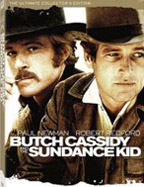 |
Butch Cassidy and the Sundance Kid. Paul Newman and Robert Redford set the standard for the "buddy film" with this box office smash set in the Old West. The Sundance Kid (Redford) is the frontier's fastest gun. His sidekick, Butch Cassidy (Newman), is always dreaming up new ways to get rich fast. Times are changing in the west and life is getting tougher. So Butch and Sundance pack their guns, don new duds, and, with Sundance's girlfriend (Katharine Ross), head down to Bolivia. Never mind that they don't speak Spanish - they'll manage somehow. A winner of four Academy Awards (including best screenplay and best song), here is a thoroughly enjoyable blend of fact and fancy done with true affection for a bygone era and featuring the two flashiest, friendliest funniest outlaws who ever called out "hands up!" |
| June 3 |
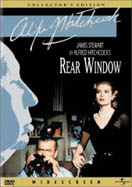 |
Rear Window. Alfred Hitchcock's classic Rear Window depicts the protagonist's imprisonment in his apartment, convalescing in a wheelchair, from which both he and the audience observe the lives of his neighbors. Cheerful voyeurism, as well as the behavior glimpsed among the various tenants, affords a droll comic atmosphere that gradually darkens when he sees clues to what may be a murder.
Photographer L.B. "Jeff" Jeffries (James Stewart) is, in fact, a voyeur by trade, a professional photographer sidelined by an accident while on assignment. His immersion in the human drama (and comedy) visible from his window is a by-product of boredom, underlined by the disapproval of his girlfriend, Lisa (Grace Kelly), and a wisecracking visiting nurse (Thelma Ritter). Yet when the invalid wife of Lars Thorwald (Raymond Burr) disappears, Jeff enlists the two women to help him to determine whether she's really left town, as Thorwald insists, or been murdered. |
| June 24 |
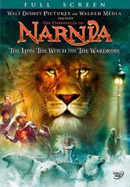 |
The Chronicles of Narnia. C.S. Lewis's classic novel The Lion, the Witch, and the Wardrobe makes an ambitious and long-awaited leap to the screen in this modern adaptation. It's a CGI-created world laden with all the special effects and visual wizardry modern filmmaking technology can conjure. While this film is not a literal translation--it really wants to be so much more than just a kids' movie--for the most part it is faithful enough to the story, and whatever faults it has are happily faults of overreaching, and not of holding back. The Chronicles of Narnia: The Lion, the Witch, and the Wardrobe tells the story of the four Pevensie children, Lucy, Peter, Edmund, and Susan, and their adventures in the mystical world of Narnia. Sent to the British countryside for their own safety during the blitz of World War II, they discover an entryway into a mystical world through an old wardrobe. Narnia is inhabited by mythical, anthropomorphic creatures suffering under the hundred-year rule of the cruel White Witch (Tilda Swinton, in a standout role). The arrival of the children gives the creatures of Narnia hope for liberation, and all are dragged into the inevitable conflict between evil (the Witch) and good (Aslan the Lion, the Messiah figure, regally voiced by Liam Neeson). |
| July 22 |
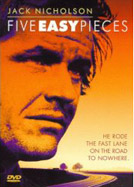 |
Five Easy Pieces. This subtle, existential character study of an emotionally distant
outcast (Jack Nicholson) forced to confront his past failures remains an
intimate cornerstone of American '70s cinema. Written and directed with
remarkable restraint by Bob Rafelson. Quiet and full of long, controlled takes, this film draws its strength from the acutely detailed, nonjudgmental observations of its complex protagonist, Robert Dupea--an extremely crass and frustrated oil worker, and failed child pianist hiding from his past in Texas. Dupea spends his life drinking beer and sleeping with (and cheating on) his annoying but adoring Tammy Wynette-wannabe girlfriend, but when he learns that his father is dying in Washington State, he leaves. After the film transforms into a spirited road movie, and arrives at the eccentric upper-class Dupea family mansion, it becomes apparent that leaving is what Dupea does best--from his problems, fears, and those who love him. Nicholson gives a difficult yet masterful performance in an unlikable role, one that's full of ambiguity and requires violent shifts in acting style. Several sequences--such as his stopping traffic to play piano, or his famous verbal duels with a cranky waitress over a chicken-salad sandwich--are Nicholson landmarks. Yet, it's the quieter moments, when Dupea tries miserably to communicate and reconcile with his dying father, where the actor shows his real talent--and by extension, shows us the wounded little boy that lurks in the shell of the man Dupea has become. |
| August 5 |
 |
The African Queen. The 1951 John Huston classic, set in Africa during World War I,
garnered Humphrey Bogart an Oscar for his role as a hard-drinking
riverboat captain in Africa, who provides passage for a Christian
missionary spinster (Katharine Hepburn). Taking an instant, mutual
dislike to one another, the two endure rough waters, the presence of
German soldiers, and their own bickering to finally fall into one
another's arms. This is classic Huston material--part adventure, part
quest--but this time with a pair of characters who'd all but given up
on happiness. Bogart (a longtime collaborator with Huston on such
classics as The Maltese Falcon and Key Largo) and Hepburn have never
been better, and support from frequent Huston crony Robert Morley (Beat
the Devil, also featuring Bogart) adds some extra dimension and color. |
| August 19 |
 |
Young Frankenstein.
If you were to argue that Mel Brooks's Young Frankenstein ranks among the top-ten funniest movies of all time, nobody could reasonably dispute the claim. The movie is both a loving tribute and a raucous, irreverent parody of Universal's classic horror films Frankenstein (1931) and Bride of Frankenstein (1935). Filming in glorious black and white, Brooks re-created the Frankenstein laboratory using the same equipment from the original Frankenstein (courtesy of designer Kenneth Strickfaden), and this loving attention to physical and stylistic detail creates a solid foundation for nonstop comedy. The story, of course, involves Frederick Frankenstein (Gene Wilder) and his effort to resume experiments in re-animation pioneered by his late father. (He's got some help, since dad left behind a book titled How I Did It.) Assisting him is the hapless hunchback Igor (Marty Feldman) and the buxom but none-too-bright maiden Inga (Teri Garr), and when Frankenstein succeeds in creating his monster (Peter Boyle), the stage is set for an outrageous revision of the Frankenstein legend. Young Frankenstein is a charmed film, nothing less than a comedy classic, representing the finest work from everyone involved. Not one joke has lost its payoff, and none of the countless gags have lost their zany appeal. From a career that includes some of the best comedies ever made, this is the film for which Mel Brooks will be most fondly remembered. Befitting a classic, the Special Edition DVD includes audio commentary by Mel Brooks, a "making of" documentary, interviews with the cast, hilarious bloopers and outtakes, and the original theatrical trailers. No video library should be without a copy of Young Frankenstein. And just remember--that's Fronkensteen. |
| Sept. 2 |
|
No Movie on this date. The King and I has been moved to September 30 |
| Sept. 16 |
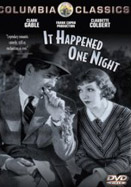 |
It Happened One Night.
Director Frank Capra took home every Oscar in the book (well, okay, all the major ones) for this seminal 1934 comedy starring Clark Gable as a hard-bitten reporter who stays close to a runaway heiress (Claudette Colbert) rather than lose a good story. Funny and sexy, the film is full of memorable scenes often referred to in other films, such as the "walls of Jericho" (a mere bedcover hung on a line down the middle of a room so opposite-sex roommates can get undressed), and Colbert's famous flash of thigh to stop a speeding car in its tracks. Capra's brisk, urbane brand of wit was a perfect complement to his populist faith in the common man (in this case, Gable's character), and that inspired combination makes this film both a spirited entertainment and an uplifting experience. |
| Sept. 30 |
 |
The King and I. The third Rodgers & Hammerstein Broadway hit to go before the cameras, The King and I boasts a career-making performance from Yul Brynner, repeating his stage triumph as the titular monarch and proving to moviegoers that bald can be beautiful. It's Brynner's proud king that provides the fulcrum to the plot, and it's Brynner himself, with his piercing gaze and graceful physicality, that demands our attention. The story line follows widowed English teacher Anna Leonowens (Deborah Kerr) to her new posting as tutor to the Siamese king's formidable mob of children. The collision of East and West affords its winning mixture of drama and humor, and the warm friendship that grows between the king and the patrician teacher provides a poignant, unfulfilled romance between the two wary protagonists. Into this framework, the composers insert a superb score, echoing Asian motifs, as well as a bouquet of lovely songs including "Hello, Young Lovers," "Shall We Dance," and two ensemble pieces for Anna and the royal children ("Getting to Know You" and "I Whistle a Happy Tune") that suggest prototypes for Rodgers & Hammerstein's later hit, The Sound of Music.
For this 1956 production, 20th Century Fox lavished stereophonic sound, widescreen cinematography, intricate production design, and stunning sets. Technically, this newly mastered THX version is the best-looking and -sounding King yet to hit video. But, regardless of format, the glorious music is reason enough to hit "play." |
HOME | DIRECTIONS
SCHEDULES FOR PREVIOUS YEARS
|

